July 9, 2010
|
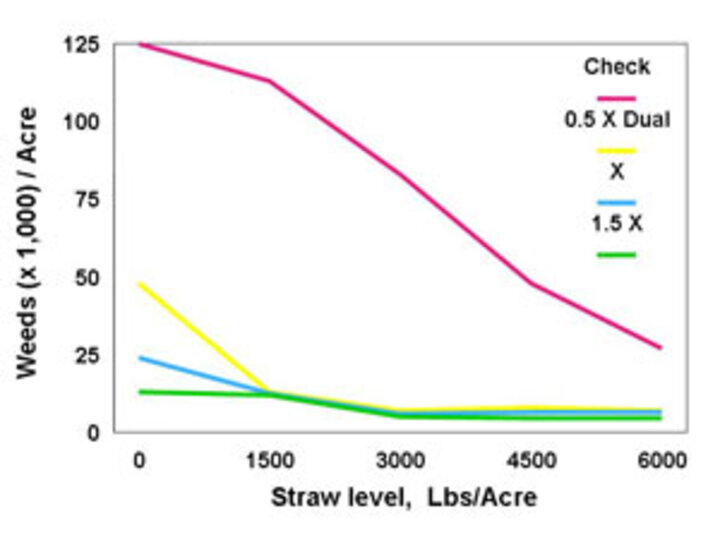
Figure 1. UNL research in western Nebraska shows the weed control impact of 6,000 lb of wheat residue on the field compared to a herbicide application. (A 60 bu/ac wheat field provides 6,000 lb of residue per acre.) |
As wheat harvest begins, remember what a valuable resource wheat stubble is to crop production in Nebraska. Wheat stubble offers several benefits and can add value to your crop. Wheat stubble
- provides soil residue cover that helps minimize evaporation, which in turn increases the water available for subsequent crops;
- reduces weed emergence (Figure 1);
- reduces erosion on sloping fields;
- provides soil nutrients;
- builds soil organic matter; and
- provides habitat for wildlife such as pheasants.
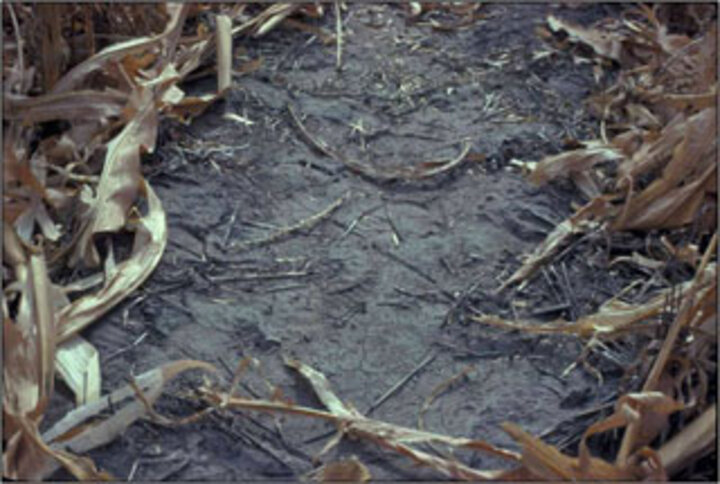
|
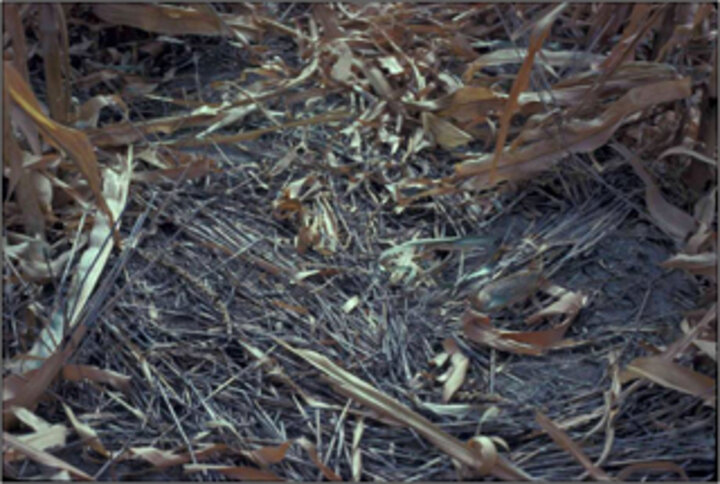
|
|
Figure 2. (a) Exposed, bare soil from baling wheat stubble the previous year. (b) Heavy residue covered soil from wheat stubble left behind the previous year. The corn grown in the heavy residue yielded 117 bushels/acre on dryland while the corn grown in the baled stubble in the same field yielded only 97 bushels/acre. |
|
In western Nebraska, where water is the most limiting factor in crop production, the increased water savings from wheat stubble is incredibly valuable. Figure 2 shows a field where the straw spreader was removed and the windrow was baled on half the field and spread evenly on the other half. The following year, the corn yielded 20 bushels higher where the residue was left on the field.
|
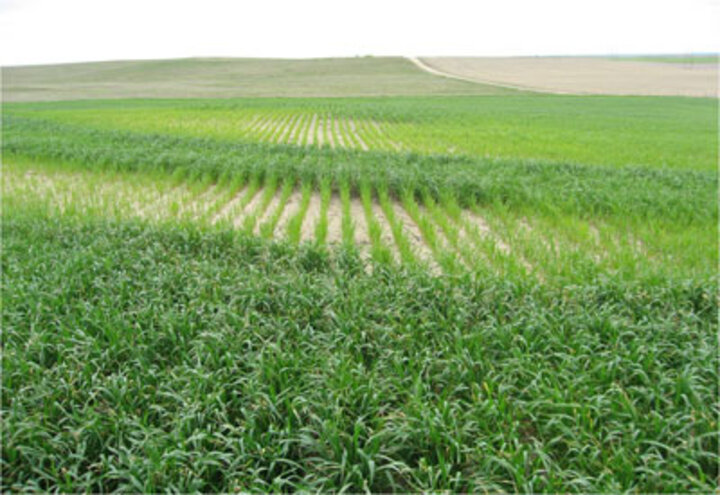
Figure 2. Strips of healthy wheat intermittent with strips of thin poorly growing wheat as a result of poorly distributed wheat stubble at harvest the previous year. |
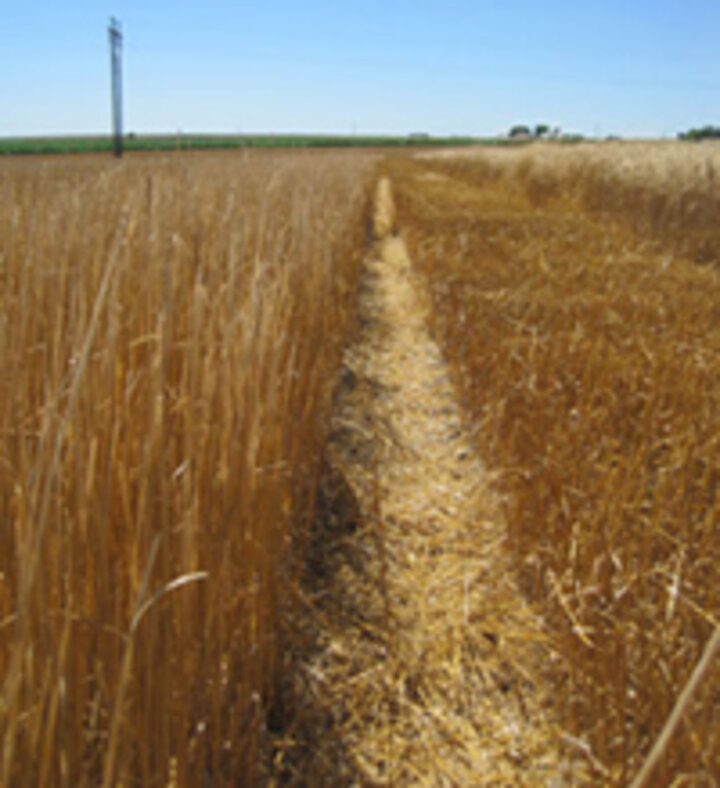
Figure 3. Wheat stubble on the left was harvested using a stripper head while the wheat stubble on the right was harvested as high as possible using a conventional grain head. |
If wheat stubble is not going to be left in a windrow and baled, combine straw spreaders should be set to evenly distribute the wheat stubble across the entire swath. Figure 3 shows a field of wheat following wheat where wheat stands were significantly poorer in some areas than in others (see Good Yields, Bad Weather Lead to Nitrogen Deficiencies in Wheat, 5/21/2010). The failure to spread the residue across the entire combine head swath created a situation where nitrogen mineralization occurred and more moisture was stored in the wheat stubble than in the bare soil areas.
|
||||||||||||||||||||||||
The additional moisture from increased wheat residue can increase yields in the following year’s crops. This has been well observed, as seen in Table 1. In a study conducted at Kansas State University, yields increased in the following corn crop when wheat stubble was cut at 15 inches rather than 7.5 inches. The increased yields were most likely due to increased moisture conservation. In the study, each additional inch of stubble left on the stalk increased corn yields the next year by approximately 2 bushels per acre.
Therefore, in cropping systems where water is the most limiting factor in yield, careful consideration should be given to saving the wheat stubble and leaving the stubble as high as possible. Often the wheat heads left behind are smaller heads and it can take two or even three of these smaller heads to equal one average size head because there are fewer kernels and the seed size is smaller.
Leaving More Standing Stubble
Using stripper headers on harvesters is an excellent way of increasing the height of stubble residue. Figure 4 shows the increased wheat stubble height from using a stripper header as opposed to using a conventional wheat head.
Un-harvested wheat heads are often a concern to growers, but, on average, they’ll only lose one bushel per acre if one wheat head per square foot is lost. After harvesting a small area, growers can carefully look over a 10 x 10 foot area. For every 100 wheat heads found, the loss would be approximately 1 bushel per acre.
Creating Wildlife Habitat
Another factor affected by wheat stubble height is wildlife inhabitance. A study found that wheat cut at 0-4 inches did not provide adequate cover to encourage pheasants while wheat cut at 12-18 inches provided adequate habitat to encourage pheasants. While pheasant habitat will not likely be the only factor a grower considers when cutting wheat, growers should be aware that decisions they make now will certainly affect many things later in the year, as well as in following years.
Greg Kruger
Extension Cropping Systems Specialist, West Central REC, North Platte
Bob Klein
Extension Western Nebraska Crops Specialist, West Central REC, North Plattte
Tim Shaver
Extension Nutrient Management Specialist, West Central REC, North Platte
